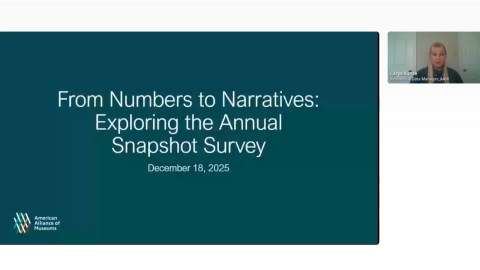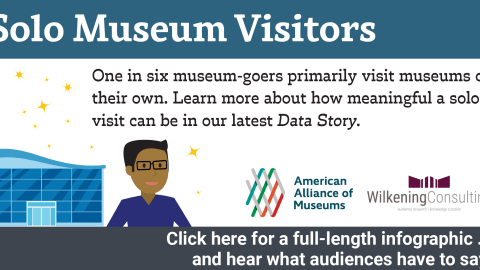This is the third installment of a series of “stories from the future” illustrating how museum practitioners can use trends data as a jumping off point for exploring potential futures. (Read the earlier installments here and here. The CFM forecasting report Museums & Society 2034speculates that, in the face of the increasing technological noise aand clutter of the future, museums may become oasis in which people escape from multi-tasking and What might that look like? Maybe like the (fictional) Ransolm Museum of Art—a 21st century institution that has capitalized on the desire for respite, retreat and the real spawned by our hyper-connected, multi-tasking, increasingly virtual daily environment of work and play.
The Ransolm Museum of Art in Los Angeles provides a jarring contrast to the bustling city outside its doors. After passing through the four acre “buffer garden” (which conceals advanced sound baffle devices that block 90% of the noise from surrounding streets) visitors are required to check all non-medical electronic devices at the museum’s door. Visitors using technologically based accessibility-enhancement devices such as EnhancedSight and EchoLocator are encouraged, but not required to forgo these devices as well. In fact, smuggling in an earphone bud or cloudlink device won’t do you any good, because the museum’s walls are engineered to block all electronic signals from outside.
Once inside, the Ransolm’s exhibits are a throwback to a bygone era. There is one set of labels (print), rather than the abundance choice of interpretive “threads” museum-goers are used to selecting using portable interfaces. They don’t offer recorded audio tours—not even old-fashion cassette tape packs (though this was suggested by one board member, who waggishly contended it would be retro enough to fit the museum’s low-tech ethos.) Visitors requesting audio commentary are personally escorted by a staff member who obligingly reads the label, providing translation as appropriate, or describes the painting or sculpture in question.
In contrast with the replicas and holographic projections used by many museums today (which according to the American Association of Museums, comprise an average of 20% of the material on display in a typical art museum) all the objects at the Ransolm are “real” and genuine. Their conservators even follow the quaint (and many would argue out-dated) convention of carrying out repairs in a way that renders them distinct and identifiable.
This does not mean the museum is non-interactive. Sketching and (old-fashioned mechanical) photography are encouraged. Over a dozen “appreciation” groups have regularly scheduled meetings in the museum to discuss exhibitions or individual works of art. The museum’s “contemplation rooms” are particularly popular—here a visitor (after browsing the collections via the web, from home) can book time, unobtrusively escorted by a staff member, to sit and examine a work selected from the collection for up to an hour.
The museum has mined a rich source of revenue via its corporate retreats, enabling companies to rent the museum after hours or on Mondays for staff “personal renewal” time, or for “single tasking” sessions in the museums meeting rooms and auditorium. (Which has excellent acoustics despite the absence of electronic speakers. Of course, computer projection is not available.)
In a 2033 poll by the Los Angeles Times WebNews service, LA residents voted the Ransolm Museum the “Best Secret City Treasure.” This despite the fact that it receives over 60,000 visits a year (which is above the national average for an art museum of its size.) At peak hours you may be sharing the museum with 300 other people—but it would be difficult to tell that as you enjoy the quiet and peace of its galleries.








